Superfamily Aplysioidea Higher classification Aplysia | Scientific name Aplysia californica Rank Species | |
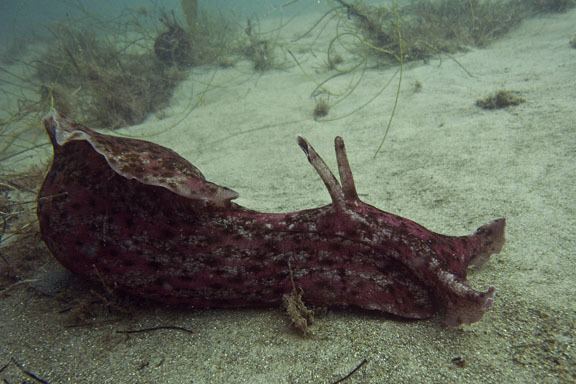 | ||
Similar Aplysia, Aplysiomorpha, Molluscs, Aplysiidae, Gastropods | ||
The california sea hare aplysia californica
The California sea hare, also known as the California sea slug, scientific name Aplysia californica, is a species of sea slug, specifically a sea hare, a marine opisthobranch gastropod mollusk in the sea hare family, Aplysiidae.
Contents
- The california sea hare aplysia californica
- The california sea hare
- Distribution
- Description
- Predators
- Life cycle
- Sexual reproduction
- Feeding habits
- Laboratory use
- Genomics
- References
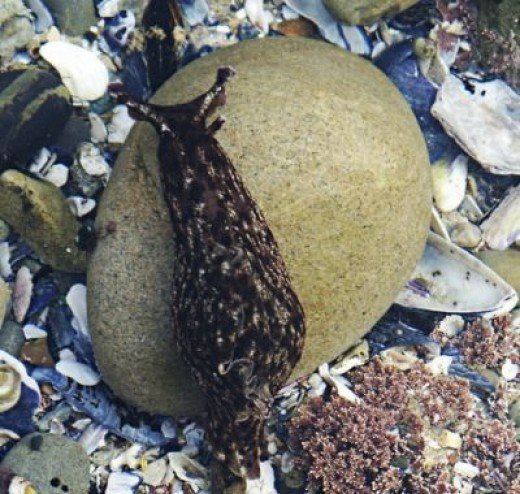
The california sea hare
Distribution
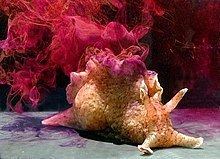
This species is found on the Pacific coast of California, United States, and northwestern Mexico (including the Gulf of California). Aplysia inhabit the photic zone to graze on algae, mainly the intertidial and sub-littoral zones usually not deeper than 18–20 m.
Description
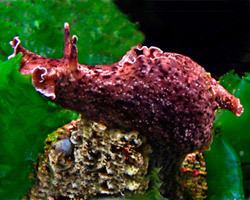
The maximum length recorded for the California sea hare is 75 cm (30 in) when crawling and thus fully extended, although most adult specimens are half this size or smaller. Adult animals can weigh up to 7 kg (15 lb). A closely related species, Aplysia vaccaria, the black sea hare, can grow to be larger still.
Predators
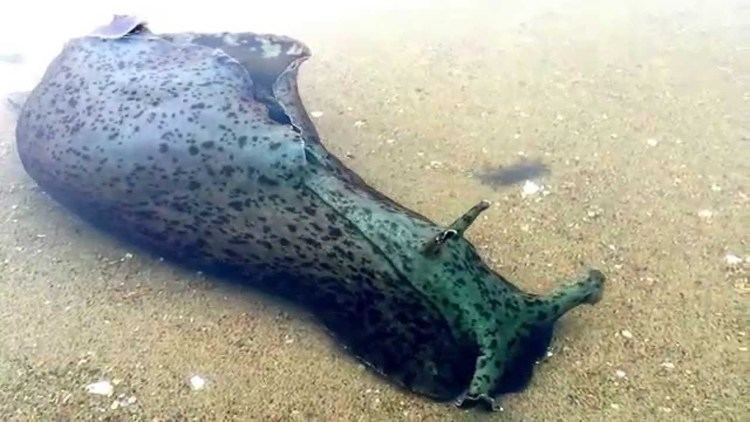
Because of the toxins in its body that come from consuming algae, the California sea hare has very few predators. Among these, however, is the giant green anemone, which reportedly takes them in large numbers; however, the anemone will capture a sea hare and then proceed to digest only 67-85% of it before regurgitating the remains. This is because the anemone consumes only enough of the sea hare to expose the sea hare's digestive gland and its associated toxins. Once this gland has been exposed, it causes the anemone to reject all of the remaining undigested animal, including parts it would otherwise have taken in as food. Other predators include starfish, lobsters, and the ophistobranch Navanax inermis which will take juveniles.
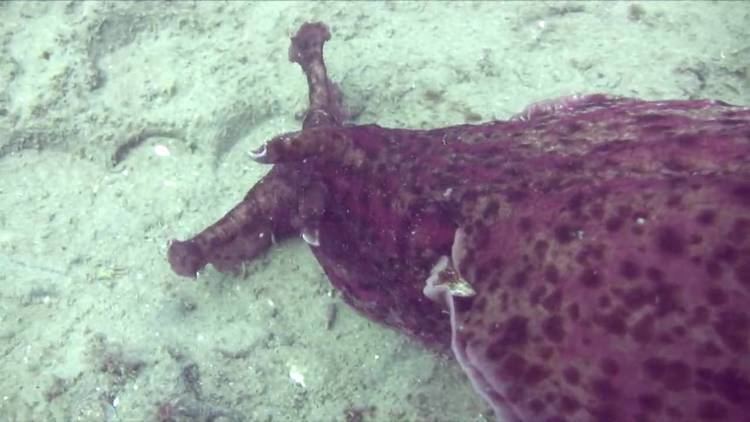
When it is considerably disturbed, the sea hare is capable of releasing two different kinds of ink from different locations within its mantle cavity, much in the way an octopus does. One ink is reddish-purple and comes from what is called the purple ink gland, while the other is milky white, comes from what is called the opaline gland, and contains the aversive chemical opaline.
Life cycle
Like all sea hares, the California sea hare is hermaphroditic, acting as male and female simultaneously during mating. Aplysia is known to form mating chains with up to 20 animals, thus each animal can serve as male and female at the same time. The eggs are yellow-green, and change after 8 to 9 days into a brown color before larvae hatch. Mating is most prominent during the summer month following the rise of the water temperature to 17 degrees Celsius. Aplysia has a generation time of 19 weeks: Day 1-37 after hatching from the egg planktonic stage, day 34-37 Metamorphic stage, day 45-80 juvenile stage (35 days in total). Reproductive maturity is reached 85 days after hatching (133 days after deposition of the fertilized eggs). The development of the nervous system lasts for a total of 140 days The life span is assumed to be around a year, yet older animals have been found. Cooler temperature delays spawning and has been shown to extend the lifespan.
Sexual reproduction
At the base of the right anterior tentacle is the aperture from which the penis can protrude. The genital aperture lies at the anterior end of the mantle cavity, a seminal grove arises from it and runs forward to the penis, at the base of the anterior tentacle.
Coupling lasts for hours or sometimes for days, although the actual passage of the sperm may take only a few minutes. Egg laying normally has to be triggered by copulation, but it occurs spontaneously in individuals kept in isolation for up to 3–4 months (typically these eggs are unfertilized). Copulation occurs most frequently in the early morning, and only rarely after 12:30 pm. An individual animal weighing 2,600g was recorded to have laid about 500 million eggs at 27 separate times during less than five months.
Feeding habits
Like all Aplysia species, the California sea hare is herbivorous. Its diet consists primarily of red algae like Laurencia pacifica, Plocamium pacificum, and Ceramium eatonianum, which gives the animal its typically reddish or pinkish coloration. Thus Aplysia resembles the food it grazes on and cannot be distinguished easily from the seaweed unless the animal is moving.
Laboratory use
Aplysia californica has become a valuable laboratory animal, used in studies of the neurobiology of learning and memory, and is especially associated with the work of Nobel Laureate Eric Kandel.
Its ubiquity in synaptic plasticity studies can be attributed to its simple nervous system, consisting of just 20,000 large, easily identified neurons with cell bodies up to 1 mm in size. Despite its seemingly simple nervous system, however, Aplysia californica is capable of a variety of non-associative and associative learning tasks, including sensitization, habituation, and classical and operant conditioning. Study typically involves a reduced preparation of the gill and siphon withdrawal reflex.
Genomics
The sequencing of the whole genome was approved as a priority by National Human Genome Research Institute in March 2005. The draft genome is available on the UCSC Genome browser.
